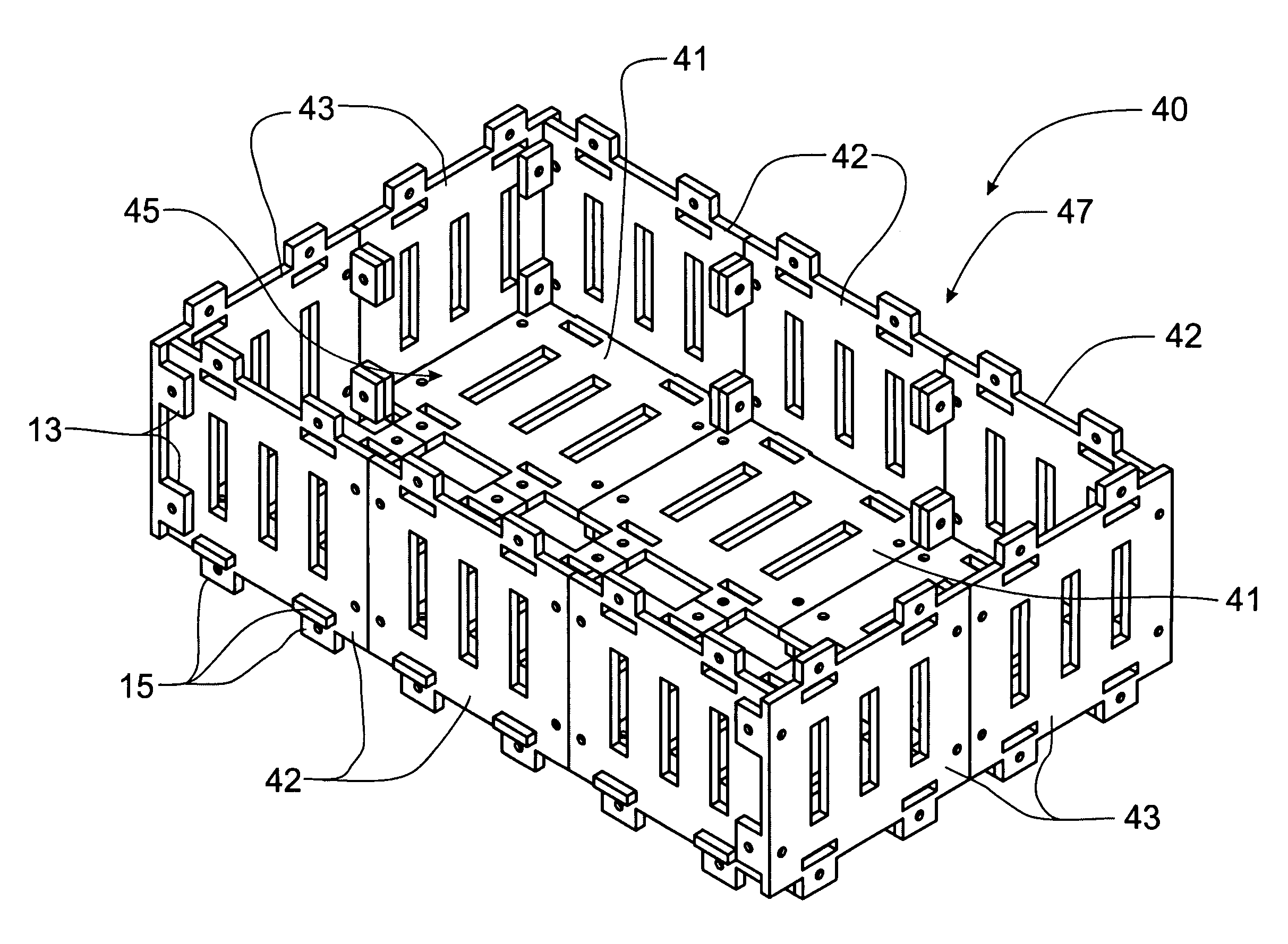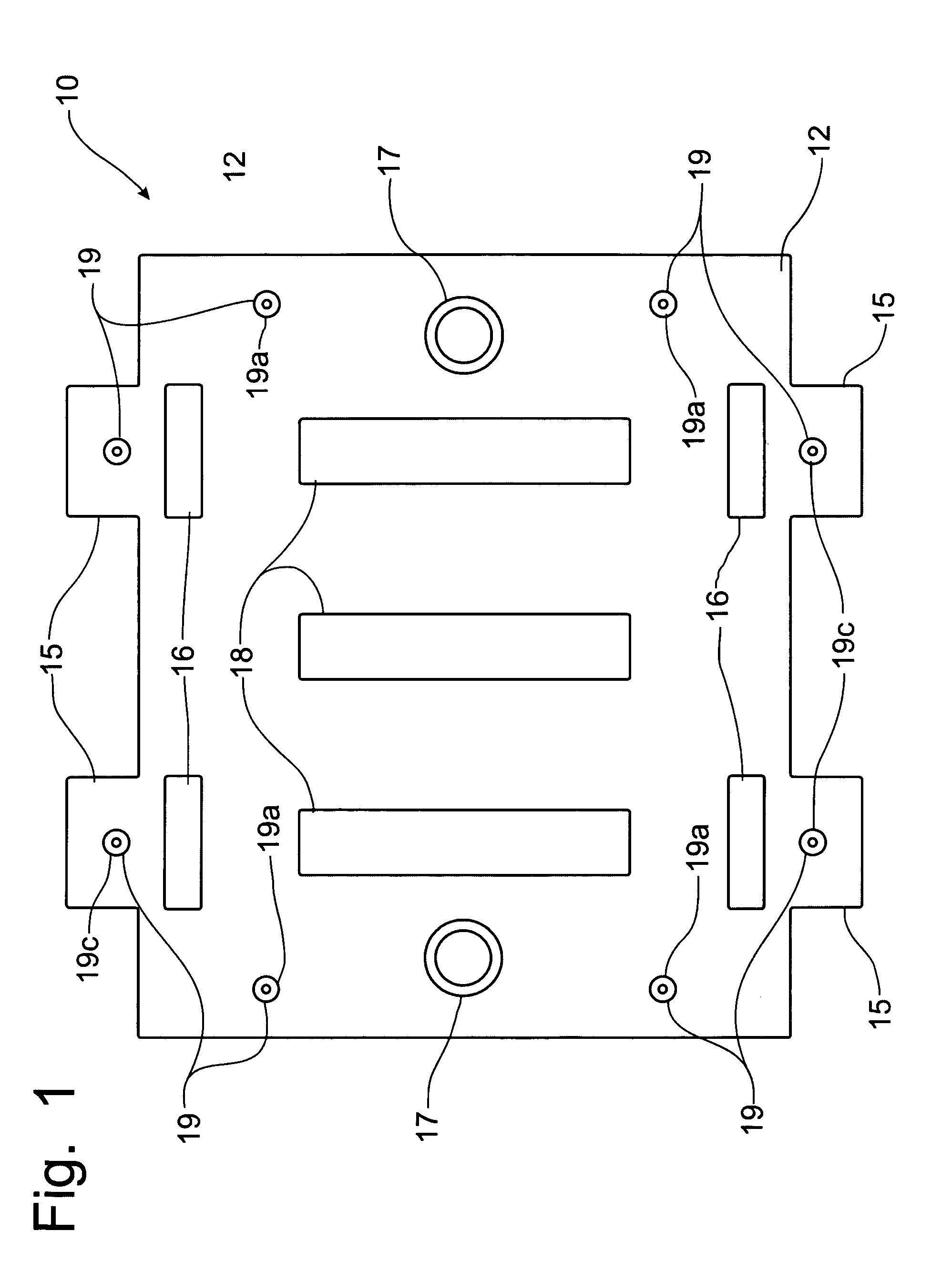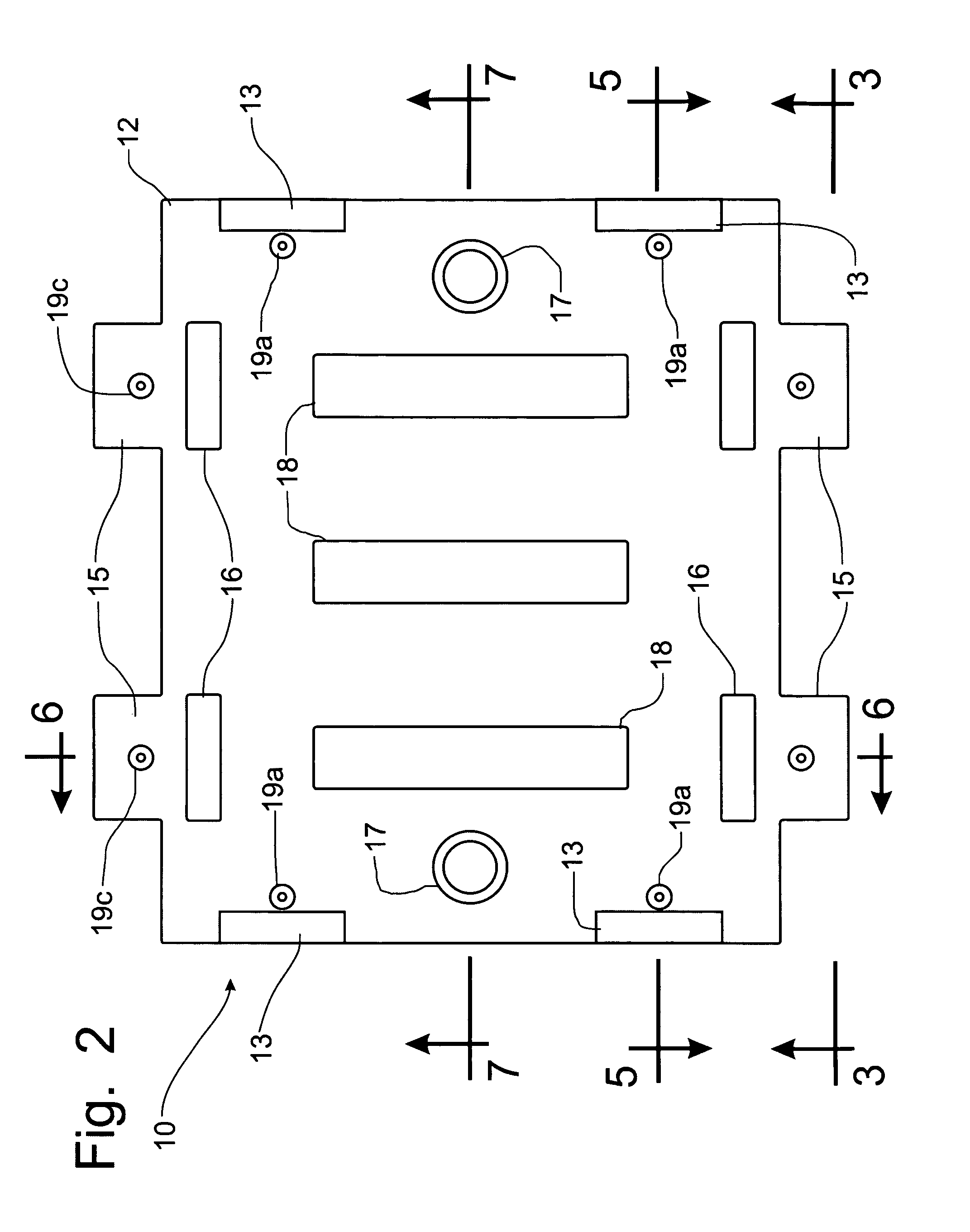Universal panel member for forming feeder assemblies
a technology of panel members and feeder assemblies, applied in the field of panel members, can solve the problems of increasing feeding costs, exposing hay to contamination, and generally wasting up to 50% of hay in the process, and achieves the effects of low manufacturing cost, carefree maintenance, and durable construction
- Summary
- Abstract
- Description
- Claims
- Application Information
AI Technical Summary
Benefits of technology
Problems solved by technology
Method used
Image
Examples
Embodiment Construction
[0042]Referring to FIGS. 1-7, a panel member incorporating the principles of the instant invention can best be seen. The panel member 10 is configured to permit a joinder of several of the panel members 10 to form a selected configuration of a feeder assembly, as will be described in greater detail below. Each panel member 10 is preferably formed from plastic through rotational molding, or a similar process that forms the panel member 10 in a double wall construction to provide a lightweight panel member 10 that is generally hollow and can be lifted and manipulated by a single person. The thickness of the walls will preferably be approximately 3 mills, which will provide adequate strength and durability for the panel member. The overall dimensions of the panel member 10 are preferably about 36 inches by 36 inches, with an overall thickness of about 1.5 inches, but these dimensions can be established to correspond to the size of the feeder assembly to be constructed from the panel me...
PUM
 Login to View More
Login to View More Abstract
Description
Claims
Application Information
 Login to View More
Login to View More - R&D
- Intellectual Property
- Life Sciences
- Materials
- Tech Scout
- Unparalleled Data Quality
- Higher Quality Content
- 60% Fewer Hallucinations
Browse by: Latest US Patents, China's latest patents, Technical Efficacy Thesaurus, Application Domain, Technology Topic, Popular Technical Reports.
© 2025 PatSnap. All rights reserved.Legal|Privacy policy|Modern Slavery Act Transparency Statement|Sitemap|About US| Contact US: help@patsnap.com



